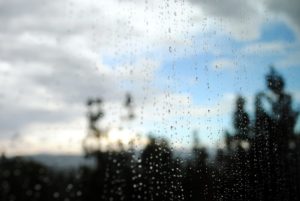6.8: Introduction to ¿Qué tiempo hace hoy?
- Page ID
- 113969

In this section you’ll learn to talk about the weather in Spanish. You may notice that descriptions of the weather in Spanish are often formed quite differently from those in English or other languages you may know. For one thing, in Spanish the weather “does” more than in English: rather than the verb “to be” (It is hot. The weather is good), many weather phrases in Spanish use the verb hacer: “to do” or “to make” (Hace calor. Hace buen tiempo). Note also that when the weather “is” in Spanish, the verb estar is used, rather than the verb ser : Está nublado. Está soleado (We’ll learn why in future chapters). It’s important to learn the weather expressions as complete phrases—not just niebla (fog), but Hay niebla (it’s foggy; there is fog).
You may be tired of memorizing, but as they say, Al mal tiempo, buena cara (To bad weather turn a good face).
Contributors and Attributions
- Introduction to ¿Qué tiempo hace hoy?. Authored by: Lumen Learning. License: CC BY: Attribution


